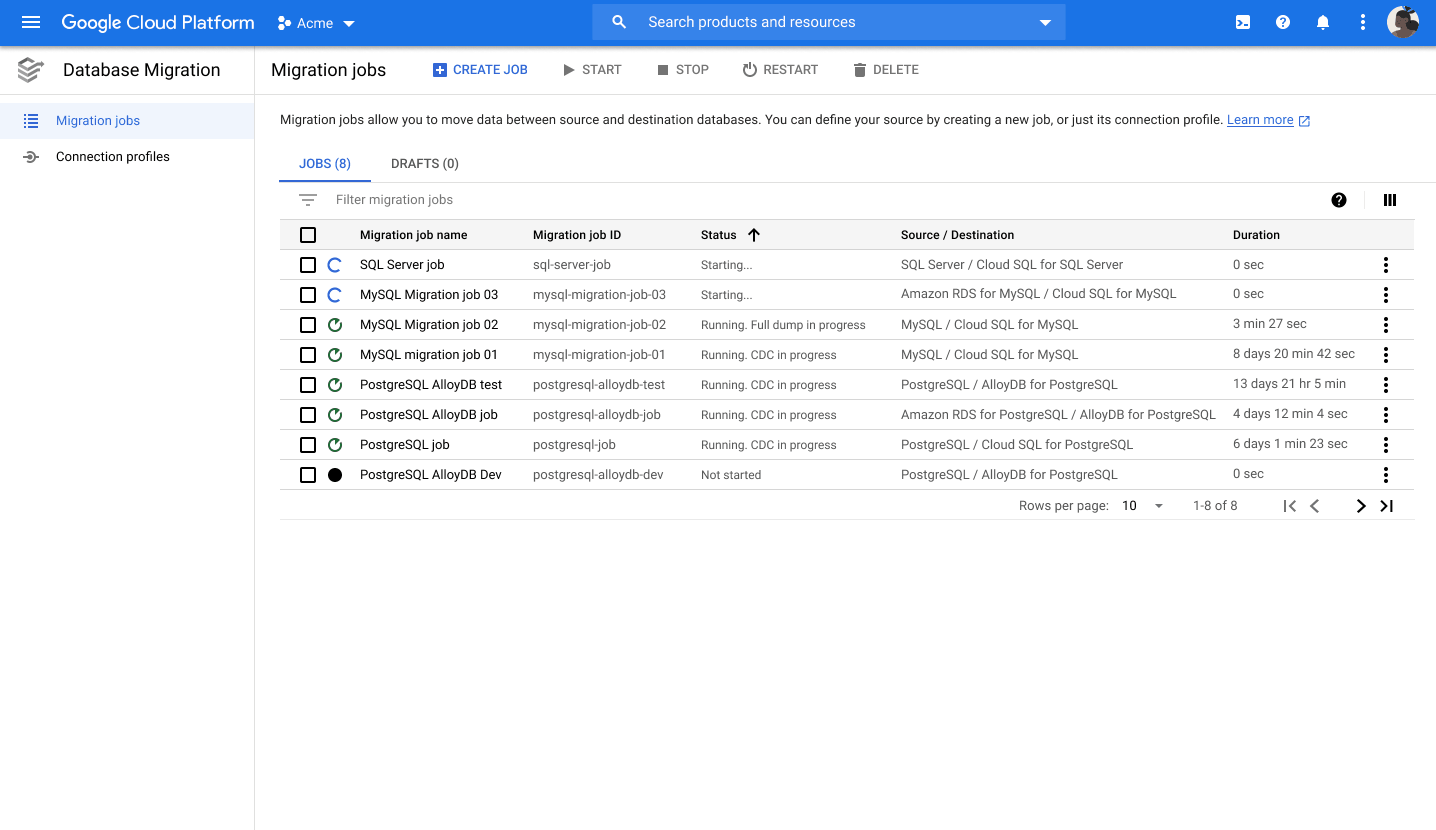Earlier this year, we announced the launch of AlloyDB for PostgreSQL, a fully-managed, PostgreSQL-compatible database for demanding, enterprise-grade transactional and analytical workloads. Companies across industries are already looking to AlloyDB to free themselves from traditional legacy proprietary databases and scale existing PostgreSQL workloads with no application changes.AlloyDB unlocks better scale, higher availability, and faster performance. In our performance tests, AlloyDB was more than four times faster than open-source PostgreSQL for transactional performance and up to 100 times faster for analytical queries. Full PostgreSQL compatibility makes it easy to take advantage of this technology. However, as our customers look to standardize on AlloyDB, they need a migration path that is easy to set up and use, requires no management overhead, and one they can trust to move data accurately and securely. In addition, it needs to run with minimal disruption to their applications.PostgreSQL to AlloyDB supportToday, we’re excited to announce the preview of Database Migration Service (DMS) support for AlloyDB. With this announcement, you can use Database Migration Service to complete your migrations to AlloyDB from any PostgreSQL database – including on premises databases, self-managed databases on Google Cloud, and cloud databases such as Amazon Aurora or Azure Database for PostgreSQL – in an easy-to-use, secure, and serverless manner. Several Google Cloud customers are looking to DMS as their path to AlloyDB adoption. For example, SenseData is a platform created to improve the relationship between companies and customers, and is a market leader in Latin America in the field of Customer Success. “At Sensedata, we’ve built our customer success platform on PostgreSQL, and are looking to increase our platform performance and scale for the next phase of our growth,” said Paulo Souza, Co-Founder & CTO, SenseData. “We have a mixed database workload, requiring both fast transactional performance and powerful analytical processing capabilities, and our initial testing of AlloyDB for PostgreSQL has given impressive results, with more than a 350% performance improvement in our initial workload, without any application changes. We’re looking forward to using Database Migration Service for an easy migration of multiple terabytes of data to AlloyDB.”Database Migration Service has helped countless Google Cloud customers migrate their PostgreSQL, MySQL and Oracle workloads to the cloud. Now, customers can use the same proven technology and user experience to migrate to AlloyDB.With DMS, migrations are:Fast and easy: Because AlloyDB is a fully PostgreSQL-compatible database, migrations from PostgreSQL are considered “homogeneous”, with no schema conversions or other pre-migration steps required. Today, more than 85% of migrations using Database Migration Service are underway in less than an hour. Reliable and complete: Database Migration Service migrations to AlloyDB utilize the native replication capabilities of PostgreSQL to maximize security, fidelity, and reliability. Minimal downtime: DMS allows you to continuously replicate database changes from your source to AlloyDB and perform the cutover whenever you feel comfortable to ensure minimal downtime and disruption to your applications. Serverless: The serverless architecture of DMS means you don’t need to maintain or provision any migration-specific resources to support this migration, and the migration will auto-scale with your data.Migrating to AlloyDB using Database Migration ServiceYou can start your migration to AlloyDB by navigating to the Database Migration page in your Google Cloud console and creating a new migration job.Migrating is easy with five simple steps:Choose the database type you want to migrate, and see what actions you need to take to set up your source for successful migration.Create your source connection profile, which can later be used for additional migrationsCreate an AlloyDB for PostgreSQL destination cluster that fits your business needsDefine a connectivity method; DMS offers a guided connectivity path to help you achieve connectivity.Test your migration job and get started whenever you’re ready.Once the migration job starts, DMS begins the migration with an initial snapshot of your data, then proceeds to continuously replicate new changes as they happen, and there you go, you have an AlloyDB cluster ready with all your source data.Learn more and start your database journey Get started with the new Database Migration Service for PostgreSQL to AlloyDB migrations. You can also get started with the previously-announced Oracle to PostgreSQL migration previews; to see them in action, you can request access now.For more information to help get you started on your migration journey, head over to the documentation or start training with this Database Migration Service Qwiklab.Related ArticleBest practices for homogeneous database migrationsHomogeneous database migrations—across compatible database engines—helps improve app performance. See how to migrate databases to Google …Read Article
Quelle: Google Cloud Platform

Published by